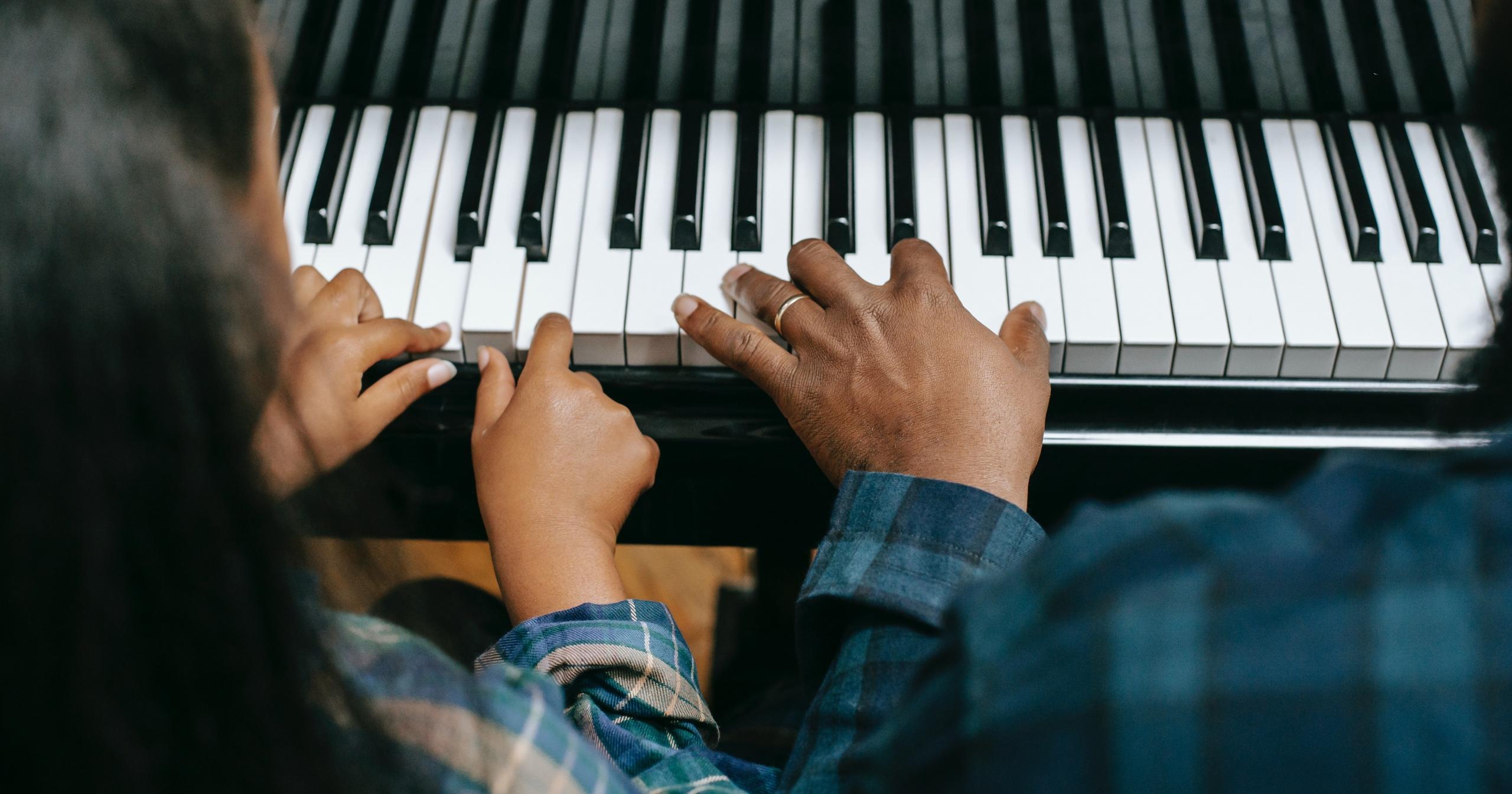What has keys but can't listen to the beauty it unlocks? A piano. Jarod Kintz
Yes, you will agree that the piano will unlock beauty unlike any other when the keys are played correctly. If we could provide a four-step recipe for success when it comes to learning how to play the piano, the first step would be to attend professional piano tutorials.
You cannot underestimate the value of roping in a private piano tutor to tutor you or your child. A piano tutor has experience in the field and may even know what bad piano habits you or your child could have before you even start playing. Piano tutorials are a way to keep aspiring piano students motivated.
It is not at all impossible to learn how to play the piano by yourself, but it surely is better to learn with the assistance of a professional piano player. Other than motivation, professional piano players offer valuable guidance on how to play the piano well. The guidance, feedback and criticism are much needed to ensure that you advance from a beginner piano player to a novice player.
It is, inevitably, the piano teacher who teaches you how to play some of your well-liked songs on the piano.
Want to give private lessons?
Join the Superprof community and share your knowledge with inquiring and motivated students.
Step 1: Playing Piano with Proper Posture and During a Piano Tutorial
Before you can even get started with learning how to play your favourite songs on the piano, the piano tutor makes sure that you are in the right position to play.
Playing the piano is a full-body experience. You need to make sure that you are in the correct position, so that playing the piano becomes almost instinctive for you. This is why having a guiding piano instructor is so important.
Piano instructors usually suggest that you position yourself in the middle of the piano. However, the piano teacher will work with you to find a position that is most comfortable for you. The piano teacher will also guide you as to which piano key you can use to be the benchmark for when you are getting seated.
Again, the position you sit in is not fixed. Depending on whether you are playing high notes or low notes, your position will alternate and vary.

Not only is a piano instructor great for helping you find the right position at the keyboard but also for helping you position your arms.
The best way to play is when your elbows are at the same height as the keyboard.
However, your body frame also plays a role in determining the best position for your hands. Your hands will be slightly under the keyboard if you have short arms.
The reason the recipe for piano playing success lies in the hands of a professional piano tutor is that the arm position you master will enable youto move your fingers on the keyboard faster and easier.
While you can watch YouTube videos on the right position to adopt when playing the piano, guidance from a teacher still remains invaluable.
Step 2: Learn Piano Songs
You've roped in a piano instructor of your choice, now what?
While teaching you all about solfeggio and positions while you play are the duty of the piano instructor, your second step towards piano playing success lies in your ability to play piano songs.
The best tip for beginner players is to start with the known before venturing to the unknown. It is much the same with the songs that you choose to learn.
The majority of aspiring piano players do actually start with, "DO RE MI FA SO LA TI DO".
When you start learning songs that you know well and then move to songs that are less familiar it makes a difference.
With arched fingers and your feet flat on the ground, learn how to play all the songs that you are familiar with first. A piano tutor will be able to advise you as to which songs are easier to learn first.
If you feel that learning piano scales will be too daunting, consider reading this article on playing your piano scales correctly.
Want to give private lessons?
Join the Superprof community and share your knowledge with inquiring and motivated students.
Step 3: Piano Lessons for Beginners Tips and Tricks
When you start learning to play the piano, it’s important to begin by playing slowly.
One of the main tips that you will be given during your beginner piano lesson tutorials is that you need to warm up your fingers before playing. Warm up on the keys of your piano of course!
It will also be very helpful when you learn to play a scale, chord progression, or piano song.
Certain pianists want to play faster than the music or play the piece at the speed required by the sheet music notations without being at the level to do so correctly. These are not the right approaches!
Increase your execution speed gradually but begin by playing slowly. You must succeed at playing the piece perfectly before being able to play fast. You can’t jump from Mary Had a Little Lamb to the most complex arpeggio. Think about using a metronome to pace your playing.
Do you know you could find great online piano lessons?
In general, playing the piano with a tutor means learning to play the piano slowly. The more gradually you learn how to play the piano, the better it will be for you to:
- Memorise what you're playing easier. Your brain must focus on every detail in the sheet music, to absorb and remember them all. Soon you’ll be able to identify and move even quicker from minor scales to major scales.
- Make technical progress quicker. Because playing slowly allows you not only to memorise music easier but also to memorise finger movements that you’ll find in other songs.
- Be attentive to what you’re playing, to piano chords, tempo, rhythm, etc. As such you’ll be assured that what you are playing is right, and that you’re not making mistakes in rhythm or in reading music.
- Better understand the nuances of the piece and “feel” what you are playing.
- Anticipate the upcoming measures instead of running after the music that you’re playing. By playing slowly, your brain will work faster than your fingers.

If you're looking for a piano tutor, why not visit the Superprof site? You can find piano lessons online.
Step 4: Gradually Improve Your Technique With Piano Chords Basics
If you are already learning how to play the piano, chances are you want to get better. That’s the goal of most pianists, whether they are absolute beginners or more experienced musicians. But making progress in piano playing could mean different things.
First, it’s knowing how to read sheet music easily. By understanding the notes, you’ll acquire a knowledge of solfege and music theory. You’ll see, soon you’ll be reading more complex music and sight reading faster. You may also learn piano scales and more about piano chords. Read this article to know more about piano chords.
Making progress when it comes to piano playing means becoming better, more flexible and faster.
Your hand movements will become more supple, and your general posture will become more comfortable. A better piano player can play in a way where he or she can be more expressive while playing and put all his or her effort into what he or she is playing.
In order to use your artistic potential to its fullest, you must have great technical skills. Technique serves the artistic, creative and performance sides.
Getting a piano instructor and taking piano lessons will surely help you advance from a beginner to a novice piano player much quicker than if you are self-taught. Again, the choice is yours!
There are so many piano tutorials and videos on the Internet, but remember not all piano tutorial videos will teach you the right piano-playing habits.
People who make piano tutorials may also have adopted bad playing habits and may be passing these habits on to you.
You’ll make great progress if you are disciplined and practise the piano regularly. Don’t force progress, because you risk skipping steps and making many mistakes. There are stages during piano instruction that just can’t be rushed through.
How to Play on the Piano With Small Hands
Some people believe that the piano isn’t the best instrument for them because of their small hands.
Is it possible to play the piano with short fingers?
Our answer is definitely!
In truth, there are many pianists who don’t have particularly large hands – piano hands as we say – who play those sharps and quarter notes with a lot of fluidity and ease.
Sure, certain music composers are known for this physical feature. But the hand length has no bearing on the quality of playing and the overall piano technique.
But remember that 95% of piano music can be played with reasonably sized and even small hands. What’s more, it’s even preferable to have small hands when playing songs that use chromatic movements. Just ask your music instructor!
Like with most things, your hand size will have its advantages and disadvantages. If you have small hands and you want to learn to play the piano, go for it!
With time, your beginner piano skills will advance, and soon you’ll learn to play from your heart and from what you know by heart. Eventually, you will be able to read music like Mozart!
While we wholeheartedly stand by all of these pieces of advice, it’s important to note that every person is different. You can decide how you want to learn to play the piano, what position works for you and what your individual playing style is. You may be a replica of Mozart, or you may have your own playing style entirely.
Want to give private lessons?
Join the Superprof community and share your knowledge with inquiring and motivated students.





